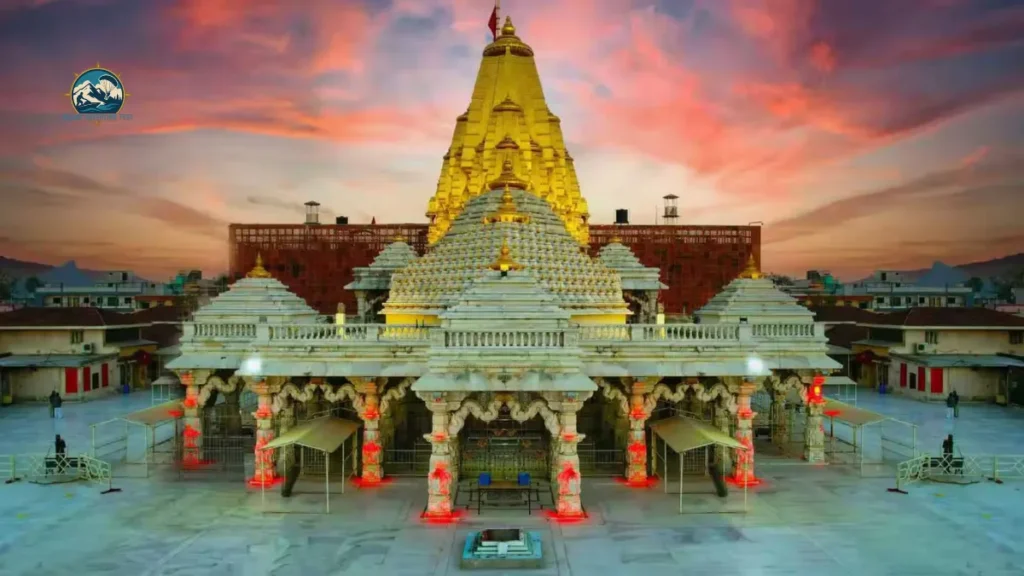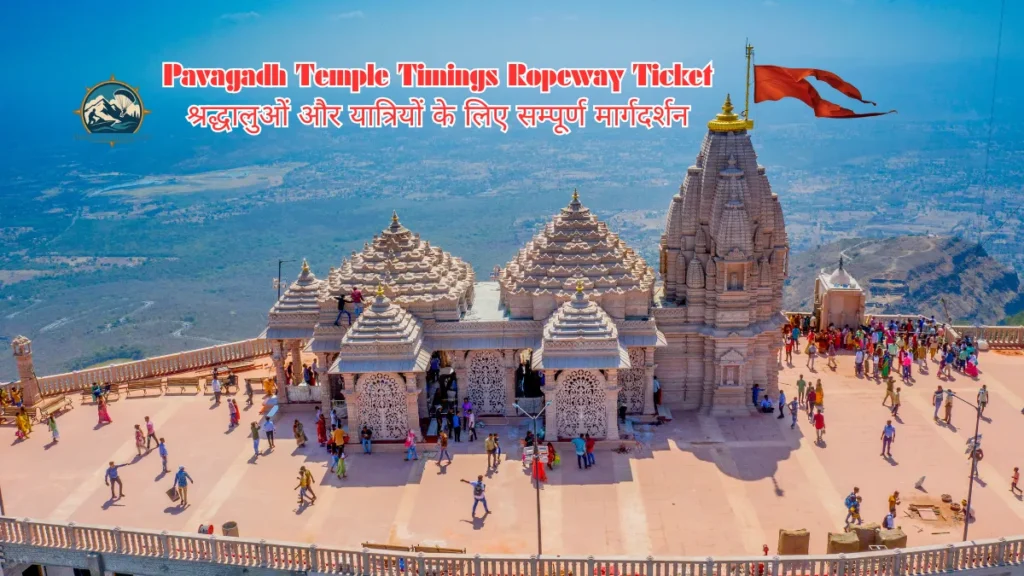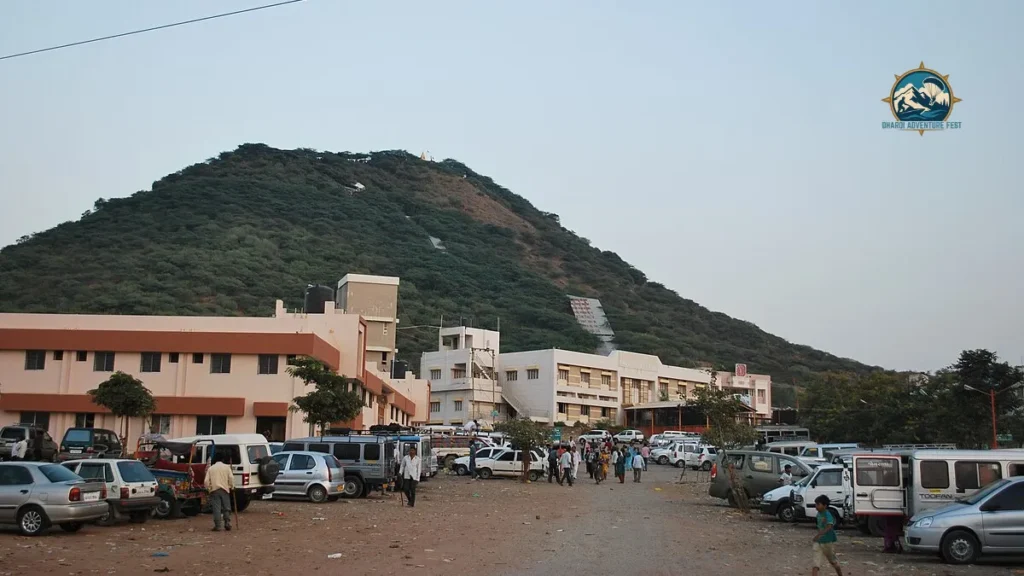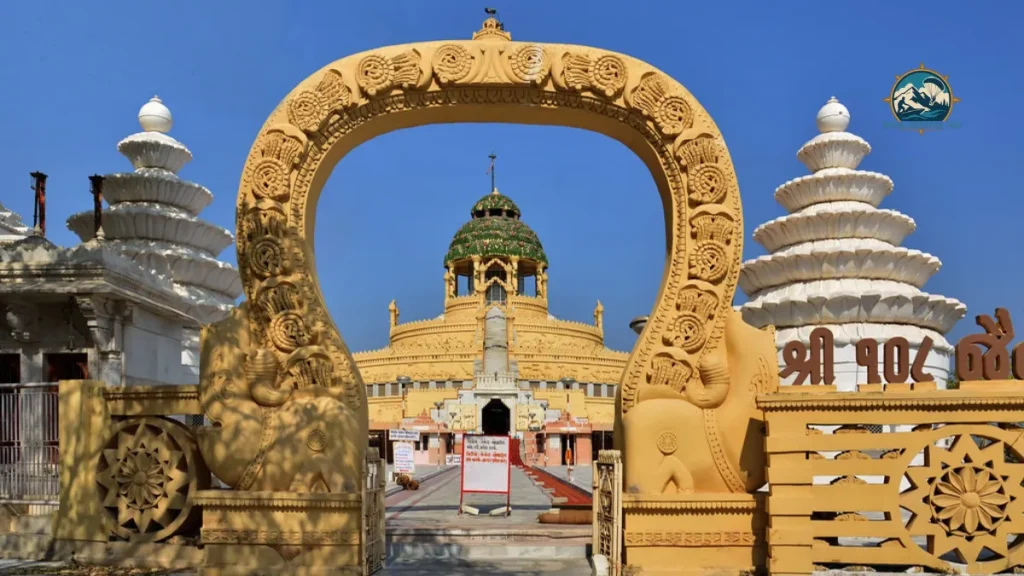Ambaji Temple history is one of the most captivating stories of devotion, mythology, and Indian spiritual tradition. Nestled in the Aravalli hills of Banaskantha district in Gujarat, near the Rajasthan border, Ambaji Temple stands as a timeless symbol of faith in Goddess Amba—an incarnation of Shakti. For centuries, this temple has been a pilgrimage center, attracting millions of devotees from across India and beyond.
More than just a religious structure, Ambaji Temple embodies India’s cultural depth, mythological richness, and unshakable devotion to the divine feminine. In this article, we will explore the origins, legends, architectural details, and festivals that highlight the Ambaji Temple history, making it one of the most important pilgrimage destinations in India.
Origins of Ambaji Temple History
The roots of Ambaji Temple history stretch back to ancient times. Historians believe that worship at Ambaji dates back thousands of years, even before structured temple architecture became common in India. The temple is considered one of the 51 Shakti Peethas, sacred shrines where body parts of Goddess Sati are believed to have fallen during Lord Shiva’s cosmic dance of grief, known as Tandava.
According to mythological accounts, the heart of Goddess Sati fell at Ambaji, giving the temple its sacred status. Since then, devotees have worshipped this place as a powerful center of Shakti, the divine feminine energy.
Ambaji Temple in Mythology
Ambaji’s significance is deeply embedded in Hindu scriptures and epics:
- Shakti Peetha Connection – Among the 51 Shakti Peethas, Ambaji holds a revered position. Unlike many temples where idols are worshipped, Ambaji houses the Shree Visa Yantra, a geometrical symbol that represents Goddess Amba. This symbolizes the divine in its purest form, beyond material representation.
- Mahabharata Reference – It is believed that the Pandavas visited Ambaji Temple before the great Kurukshetra war. They prayed for divine blessings and strength to fight their epic battle. This link with the Mahabharata further enriches the temple’s spiritual history.
- Local Legends – Folklore suggests that the goddess herself appeared in dreams of local rulers and devotees, guiding them to protect and preserve the temple. Such legends are still recounted by priests and locals, passing down the living history of Ambaji through generations.
Architectural Highlights of Ambaji Temple
Ambaji Temple’s architecture is unique and striking. Built mainly with white marble, the temple reflects traditional Hindu craftsmanship with carved pillars, detailed inscriptions, and intricate designs.
- Absence of Idol: Unlike most temples, Ambaji does not have a physical idol of the goddess. Instead, devotees worship the Shree Visa Yantra, kept hidden under a red cloth. The yantra is considered so sacred that it is not revealed to anyone, not even priests.
- Marble Grandeur: The temple’s marble walls and steps reflect simplicity combined with elegance. Its carvings depict various motifs of devotion and divine symbols.
- Renovations Over Time: Although the temple’s origins are ancient, it has been renovated multiple times to preserve its grandeur and accommodate growing numbers of pilgrims. Modern facilities have been added without compromising its traditional essence.
Festivals That Highlight Ambaji Temple History
The Ambaji Temple history is best experienced during its vibrant festivals, when the temple becomes the epicenter of devotion and celebration.
1. Bhadarvi Purnima Fair
This is the most important festival at Ambaji. Celebrated in the Hindu month of Bhadarva (August–September), lakhs of devotees from Gujarat, Rajasthan, and even Madhya Pradesh gather here. Many walk barefoot for miles in groups, singing bhajans and chanting hymns in devotion to Goddess Amba. The fair is a blend of spiritual worship, cultural programs, and folk traditions.
2. Navratri Festival
During Navratri, the temple glows with lights, devotional songs, and garba dances. For nine nights, devotees worship Goddess Amba with prayers, music, and fasting. Ambaji becomes a cultural hub, reflecting Gujarat’s devotion to Shakti and its rich tradition of folk performances.
3. Other Rituals and Fairs
Throughout the year, smaller fairs and rituals take place. These include celebrations on Chaitra Navratri, Sharad Purnima, and other auspicious Hindu dates. Each event keeps alive the living traditions of the temple and adds layers to its historic significance.
Importance of Ambaji Temple in Pilgrimage
Ambaji Temple is not just a regional pilgrimage; it is considered one of the most important shrines of Shakti worship in India.
- Part of Shakti Peeth Circuit: Pilgrims who undertake the Shakti Peetha yatra regard Ambaji as one of the must-visit shrines.
- Faith and Belief: Devotees believe that worshipping at Ambaji brings peace, prosperity, and protection from negative forces.
- Cultural Unity: The temple is a meeting point of cultures—pilgrims from Gujarat, Rajasthan, and Madhya Pradesh gather here, showcasing unity in devotion.
Key Details of Ambaji Temple
To help pilgrims and readers understand Ambaji Temple better, here is a summary of its essential details:
| Feature | Details |
|---|---|
| Location | Banaskantha district, Gujarat, near Rajasthan border |
| Deity | Goddess Amba (form of Shakti) |
| Unique Feature | No idol; worship of Shree Visa Yantra covered with a red cloth |
| Historical Importance | One of the 51 Shakti Peethas; believed that the heart of Goddess Sati fell here |
| Mention in Scriptures | Referenced in Mahabharata; linked with Pandavas’ worship |
| Major Festivals | Bhadarvi Purnima fair, Navratri festival |
| Architectural Style | White marble temple with carved pillars and inscriptions |
| Pilgrimage Importance | Part of Shakti Peetha pilgrimage circuit |
| Best Time to Visit | August–September (Bhadarvi Purnima) and Navratri |
Local Culture and Ambaji Temple History
The history of Ambaji Temple is also tied to local culture. Surrounding villages celebrate the goddess as their protector. Folk songs, traditional dances, and stories about the goddess are integral to community life. The annual fairs also boost the local economy, as villagers set up stalls, offer accommodation, and participate in cultural performances.
For centuries, Ambaji has also been a place where saints and sages meditated. Stories of their spiritual practices and blessings are part of oral traditions still remembered by the locals.
Travel Guide: Visiting Ambaji Temple
If you plan to explore Ambaji Temple and experience its history firsthand, here are some practical tips:
- How to Reach:
- Nearest Railway Station: Abu Road (22 km away)
- Nearest Airport: Ahmedabad (180 km away)
- By Road: Well connected by buses and private vehicles from major cities in Gujarat and Rajasthan
- Best Time to Visit:
- August–September during Bhadarvi Purnima
- Navratri festival season
- Winter months (October–February) for comfortable weather
- Nearby Attractions:
- Gabbar Hill: Believed to be the original seat of the goddess, located 4 km away from the main temple.
- Mount Abu: Famous hill station nearby.
- Kumbhariya Temples: 11th-century Jain temples located just a few kilometers from Ambaji.
Ambaji Temple in Modern Times
Today, Ambaji Temple continues to attract millions of devotees every year. The temple trust has developed modern facilities like guest houses, food stalls, and clean drinking water to ensure pilgrim comfort. Despite modernization, traditions remain intact, and rituals continue just as they did centuries ago.
Government initiatives have also improved connectivity and infrastructure, making Ambaji one of the most accessible Shakti Peethas for pilgrims. However, the essence of Ambaji Temple history lies in the fact that despite these modern changes, the temple still radiates the same timeless devotion.
Read in Hindi here: Ambaji Temple History: अंबाजी मंदिर का इतिहास और महत्व
Conclusion
The Ambaji Temple history is not just a story of a shrine—it is the story of India’s spiritual heartbeat. From its origins as a Shakti Peetha where the heart of Goddess Sati is believed to have fallen, to its role in the Mahabharata, and its present-day status as a vibrant pilgrimage site, Ambaji represents devotion in its purest form.
Every festival, every ritual, and every prayer at Ambaji keeps alive a history that spans thousands of years. Visiting Ambaji Temple is more than just a pilgrimage—it is a journey into India’s mythological past, cultural richness, and spiritual traditions. For anyone seeking divine blessings and a glimpse into India’s timeless heritage, Ambaji remains one of the most sacred destinations.




